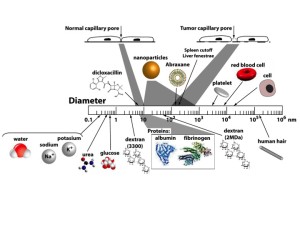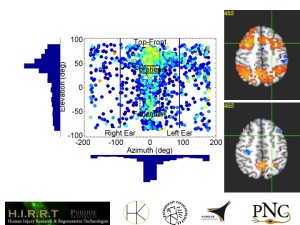A Short History of research and discovery in the H.I.R.R.T. Laboratory ~ Dr. Nauman is the lab director, but any success that our group has achieved is a direct result of our talented students (both graduate and undergraduate) and their hard work. The lab began (quite nameless) at Tulane University in 2000. Dan Shimko was its first graduate student, working on bone tissue engineering with mouse-derived adult pluripotential cells and embryonic stem cells. His efforts, and those of Ed Sander, Kirsten Lewus, and many others provided a strong foundation and were instrumental in defining our lab as one with expertise in mechanics and transport. Both are important to cell and tissue physiology, damage progression, and the development of repair strategies.
The laboratory moved to Purdue University in 2004, where we continued our exploration of tissue engineering methods to repair musculoskeletal damage, tumor detection and treatment, and the cellular level consequences of insults to the central nervous system. Darryl Dickerson pioneered the Ortho-Interface which, as its name implies, was designed to regenerate orthopaedic structures such as the enthesis or the osteochondral interface.
Dawn Sabados and Mary Schuff developed a wealth of experimental data and computational models to elucidate the biophysics of tumor cells. This work helped us understand the relative importance of transport, particle size, binding efficiency, and a whole host of other factors on the delivery of cancer treatments.
Beth Galle and Hui Ouyang (from Dr. Riyi Shi’s lab) performed an elegant series of experiments that integrated computational modeling and electrophysiological experiments, allowing us to ask questions about tissue and cellular level damage that were previously impossible to answer. Byron Deorosan then considered the biophysics of the injury and healing process. That work continued with Evan Breedlove, in collaboration with PNG, to push the boundaries of mechanical testing and computational modeling to better understand and protect against neurological trauma. One of the most important images from that work is shown below. We found that it is possible for the brain to change dramatically from the pre-season to in-season even when there are no outwardly observable symptoms. Usually this happens when players take huge numbers of hits to the top front of the head. This has been a wonderful collaboration with Drs. Talavage and Leverenz and has changed the way we think about head injuries.
We extended this work to other tissues in an effort to better understand the general progression of damage in physiological systems. Monica Susilo was able to create multi-scale experimental and computational models of the vocal folds that were able to explain the interaction between mechanical loading and transport. Kent Butz integrated biomedical imaging with mixture theory models to evaluate clinically relevant interventions for musculoskeletal injuries.
Since that time the students in the lab have explored a wide range injury prevention and injury mitigation techniques. Moving the lab to the University of Cincinnati will make it possible to work with intrepid engineers, the UC Medical School, Cincinnati Children’s Hospital and the VA Hospital.


